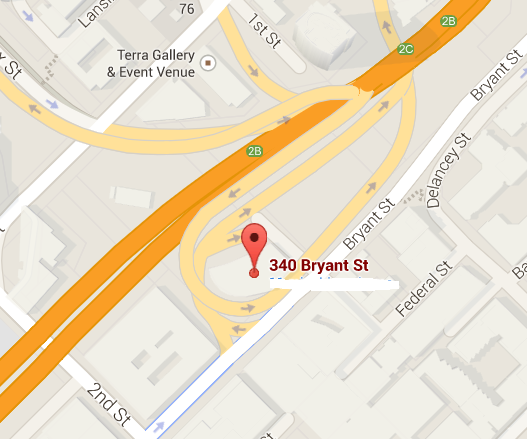Modest project on Bryant Street sheds light on a long list of planning problems

By Tim Redmond
APRIL 14, 2014 – The City Planning Commission is going to hear an item Thursday that sounds pretty mundane. It’s listed on the agenda as “Review of Past Events at the Board of Supervisors, Board of Appeals and Historic Preservation Commission.”
But in that review could be some serious issues that came out of an appeal last week of a building on Bryant Street that is being converted from commercial and industrial space to office use.
Although the Board of Supervisors rejected the appeal April 7, Sup. Jane Kim raised a number of questions that get to the heart of how city planning operates. Among them: Why is the city still using a figure for the number of workers who fit in a typical office space that’s way, way out of date?
Why can’t city planners seem to discover obvious flaws in a project proposal until somebody on the outside forces the issue?
And why isn’t the Planning Department enforcing its own new rules when it comes to pedestrian safety?
“I am embarrassed for the City Planning Department,” Sue Hestor, attorney for the appellant, explained.
Help us save local journalism!
Every tax-deductible donation helps us grow to cover the issues that mean the most to our community. Become a 48 Hills Hero and support the only daily progressive news source in the Bay Area.

The issue – as is often the case in these appeals – was a bit complicated and abstract. The developer says that his project – converting the top three floors of 340 Bryant St. to office use – needs no environmental review, because it comes under the sweeping category of the Eastern Neighborhoods Plan.
That plan had its own Environmental Impact Report – and now city officials and developers say that any modest-scale project permitted under the plan has already in effect had the legally necessary environmental review.
Hestor, representing San Franciscans for Reasonable Growth, argued that this particular project is so unusual that the existing review doesn’t address the issues adequately – particularly the problem of pedestrian access to a building that’s in essence surrounded by Bay Bridge on-ramps.
“If there is ever a dangerous place in Soma, this is it,” Hestor said. She noted that the Eastern Neighborhoods Plan EIR looked at another set of I-80 on-ramps, but never at this one. She asked that it be sent back to planning for further environmental review.
After she filed the appeal, the developer agreed to install a new crosswalk with a stoplight. But that wasn’t part of the original application, and wasn’t even discussed until the appeal was filed.
“I created the opportunity to have this discussion,” she said. And she wasn’t trying to brag – she was angry.
City planners should have caught the traffic and pedestrian problems the minute the project application arrived, she argued. It shouldn’t have taken a community group spending countless hours filing an appeal to get the obvious safety issues on the agenda. “Why do I have to be the one who brings this up?” Hestor asked. “What the hell do we have a planning staff for?”
Kim asked the planning staff to explain why the traffic and safety issues weren’t discussed at the beginning of the project and weren’t deemed serious enough to mandate environmental review. “We already knew this was not a safe site,” she said.
The response by planning staffer Kansai Uchida was telling.
The Eastern Neighborhoods EIR, he said, already talked about the problems of pedestrian safety and vehicles. In fact, it clearly noted that the plan, which allows a lot more office and dense residential development, would create a situation where more “conflicts between pedestrians and vehicles could occur.”
In other words: We knew when we approved this plan that it might jeopardize pedestrian safety, but we did it anyway, and now it’s too late. Build away.
Of course, some things have changed: The Planning Commission has adopted Vision Zero, the plan to eliminate pedestrian casualties. But planning staffers said that adoption came after this project was approved – so even if it violates the concept of Vision Zero, there’s nothing anyone can do.
Kim suggested – in something of an understatement – that “this brings up serious issues.”
The developer, represented by John Kevlin, an attorney with Reuben, Junius & Rose, said the project sponsor “is doing everything we can.” Putting in a marked crosswalk with a stoplight involves the Planning Department, the Municipal Transportation Agency, the Department of Public Works, and Caltrans, which owns the Bay Bridge right-of-way, he said.
But again: If there had been no appeal, none of this would have come up – and the Planning Department would have allowed a project that even the developer agrees has safety issues to slide right through the process.
Kim had another question for Uchita. The Planning Department estimates that there will be about 165 new workers on the site; that’s based on each worker taking up 276 square feet of space. But that figure is old – modern workplaces have fewer closed offices and the era of the large cubicle is over. Tech firms, particularly, look for open office plans; according to a recent New York Times story, the average space per worker is down to 176 square feet, and in San Francisco it’s probably lower.
So Planning’s estimate of the number of new employees who will have to cross the street to get to work may be off by a factor of almost two. The impact of that goes far beyond this project – the fees developers pay for Muni and housing mitigation are based in large part on the number of new workers their buildings will house. There are millions of dollars at stake in that one planning figure.
Why, Kim asked, is the Department still using ancient data?
Sarah Jones, director of environmental planning, had the answer: The number is in the Department’s published transportation guidelines. Sometime in the next year, she said, there would be discussion of how to “right-size it.”
In other words: This is how we’ve always done it. And by the time we get around to changing the figures, developers will have built dozens of projects using the old standard, and saved themselves millions that could have gone to the city for things like, say, traffic lights and crosswalks on Bryant Street.
It will be interesting to see how the planning staff delivers the message to the Commission. Because this one modest appeal of a relatively small project has demonstrated some very large problems in the city planning process. The meeting starts at noon.



